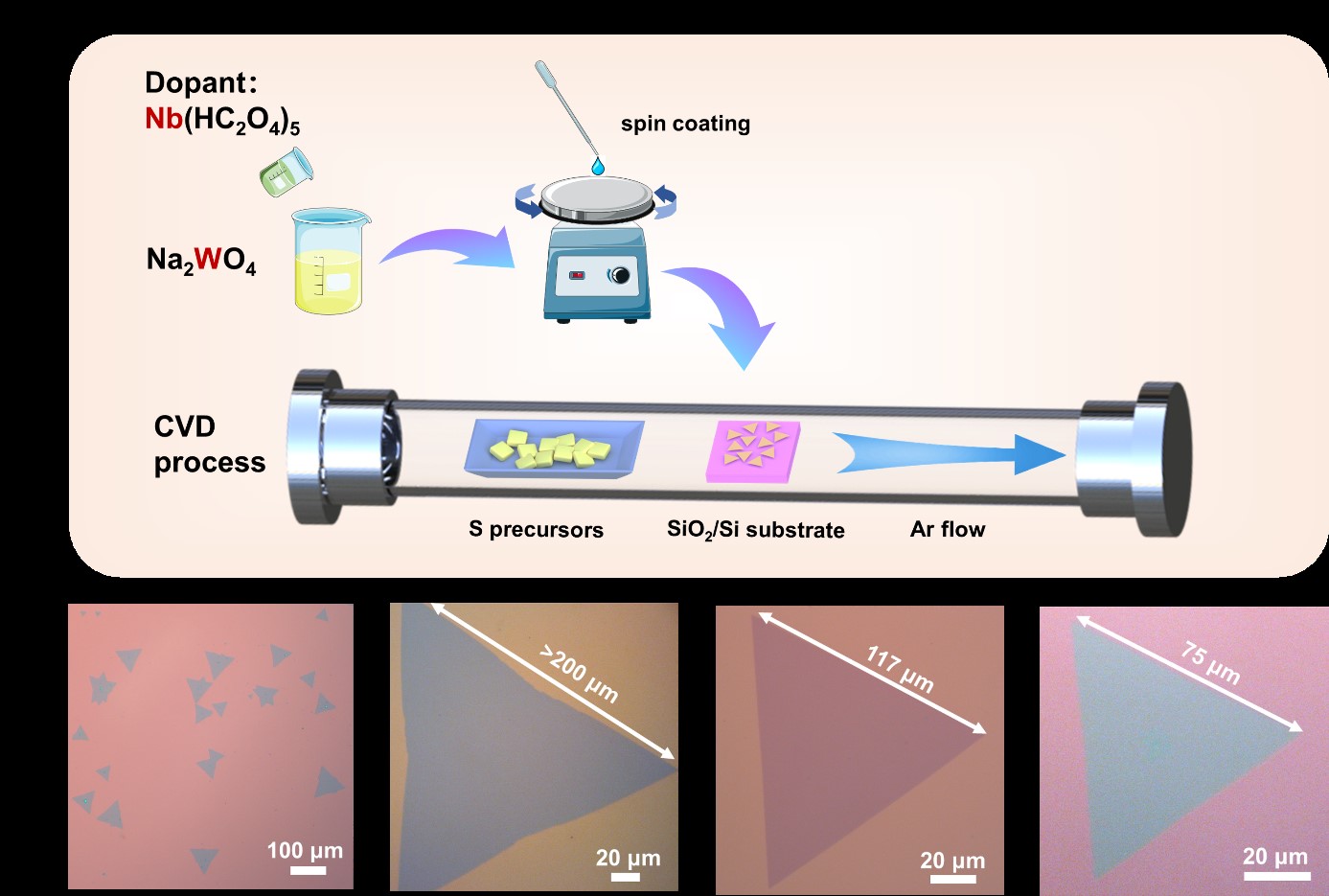新闻动态

- 地址: 江苏省苏州市苏州工业园区若水路398号
- 邮箱: tzhang2009@sinano.ac.cn
- 电话: 86-512-62872706
- 传真: 0512-62603079
- 网址: http://nanosensor.sinano.ac.cn

祝贺课题组博士生管科杰研究论文“Atomic Nb-Doping of WS2 for High-Performance Synaptic Transistors in Neuromorphic Computing”被Microsystems & Nanoengineering接收
Abstract
Due to the controllable growth and large-area synthesis for high-density integration, there is a growing interest in employing atomically thin two-dimensional (2D) transition-metal dichalcogenides (TMDCs) for synaptic transistors. In particular, substitutional doping of 2D materials allows flexible modulation of material physical properties, facilitating precise control in defect engineering for eventual synaptic plasticity. In this study, to enhance the switch ratio of synaptic transistors, we selectively performed on WS2 by introducing niobium (Nb) atoms to serve as the channel material. The Nb atoms were substitutional doped at the W sites, forming a uniform distribution across the entire flakes. The synaptic transistor devices exhibited an improved switch ratio of 103, 100 times larger than that of devices prepared with undoped WS2. Nb atoms in WS2 play a crucial role in trapping and de-trapping electrons. The modulation of channel conductivity achieved through the gate effectively simulates synaptic potentiation, inhibition, and repetitive learning processes. The Nb-WS2 synaptic transistor achieves a 92.30 % recognition accuracy on the Modified National Institute of Standards and Technology (MNIST) handwritten digit dataset after 125 training iterations. This study's contribution extends to a pragmatic and accessible atomic doping methodology, elucidating the strategies underlying doping techniques for channel materials in synaptic transistors.





